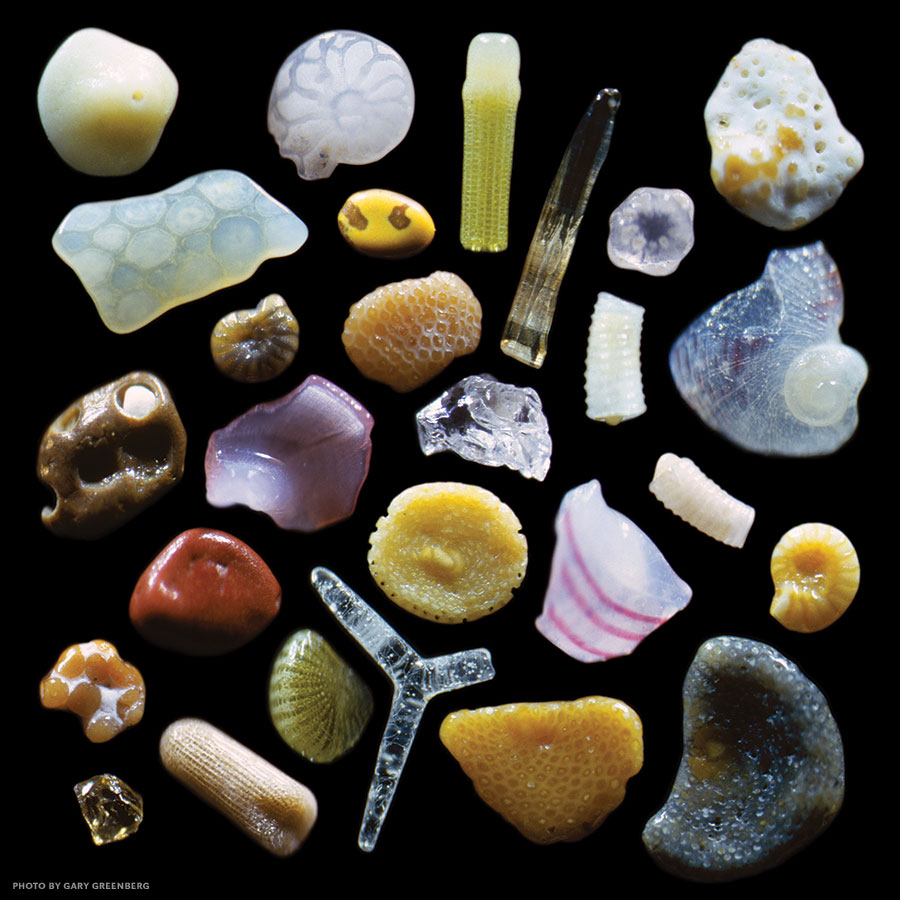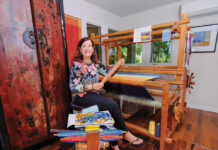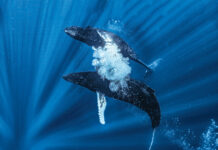Story by Alma Tassi | Photo by Gary Greenberg

Take a look at the period at the end of this sentence. Now you know the original size of the sand grains Dr. Gary Greenberg magnified more than 200 times to create the image on this page.
Since 2001, the Maui biologist and photographer has been capturing everyday objects with the Edge 3D Research Microscope he invented, and transforming them into works of art. Where the naked eye sees black, red, or white sand, Greenberg reveals the spectacular variety of each grain: a pink-lined shell fragment, a Y-shaped glassy sponge spicule, a yellow sea urchin spine.
For the photo below, Greenberg visited a Lahaina beach and collected sand that had been tumbled and polished by the surf. The creativity starts after a sample dries and he can examine the grains under his microscope. “It’s always a delightful surprise,” he says. “Every beach in Hawai‘i is different.”
Before shooting a sand portrait, Greenberg maps the grains into a composition, arranging them with an acupuncture needle. Software directs the microscope to take thirty to forty photos at different depths of field, discards any out-of-focus images, and creates one composite photograph.
There’s more to his method than just a pretty picture. Greenberg says, “My mission is to make people aware of the incredible beauty of nature and [help them] gain an appreciation for the world we live in.”
You can find more of Dr. Gary Greenberg’s microphotography—and how he creates it—at SandGrains.com.





